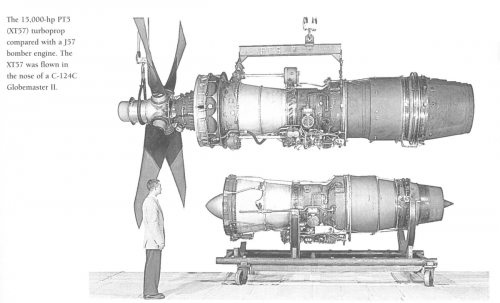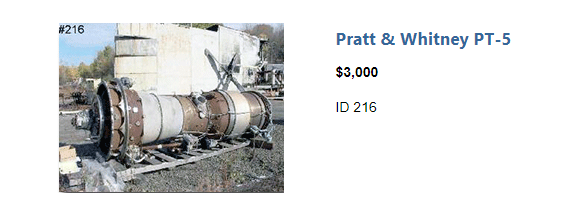Does anyone have details on the Pratt & Whitney T57 turboprop? I would especially love to see some drawings and dimensions. Would also love to see gearbox details.
I do know that the T57 was the turboprop version of the later J57, with the “wasp-waist”. The T57 was started in 1953, one year after qualification of the “wasp-waist” design, to power the Douglas C-132 transport, which was cancelled in March 1957 along with the T57. Six T57 engines were built, over 3,100 engine test hours were run, and the T57 was flown October 1956. Projected/design power was 15,000shp.

Above: Douglas C-124 Globemaster with a Pratt & Whitney T57 turboprop installed in the nose.
I do know that the T57 was the turboprop version of the later J57, with the “wasp-waist”. The T57 was started in 1953, one year after qualification of the “wasp-waist” design, to power the Douglas C-132 transport, which was cancelled in March 1957 along with the T57. Six T57 engines were built, over 3,100 engine test hours were run, and the T57 was flown October 1956. Projected/design power was 15,000shp.

Above: Douglas C-124 Globemaster with a Pratt & Whitney T57 turboprop installed in the nose.



